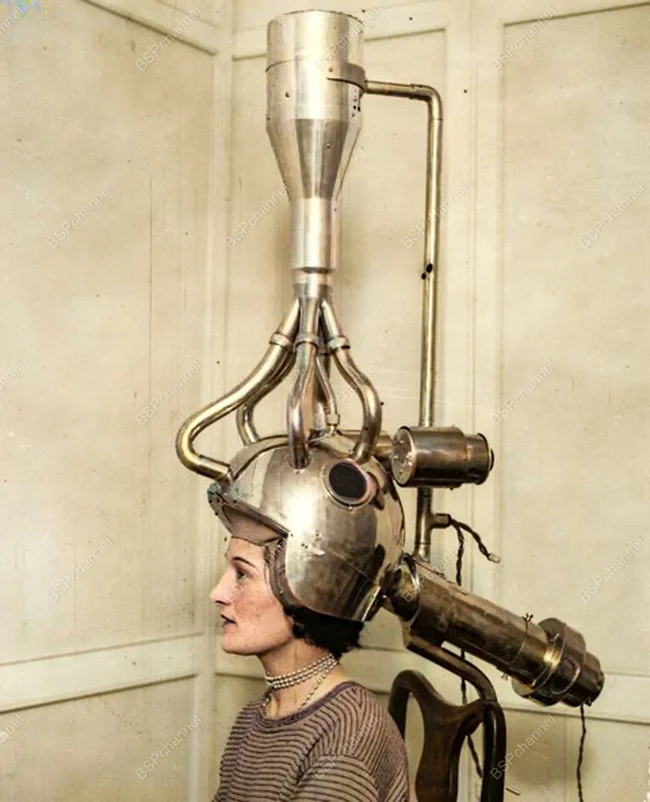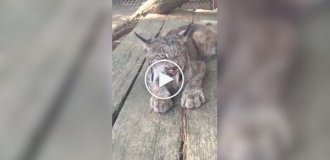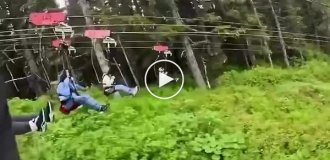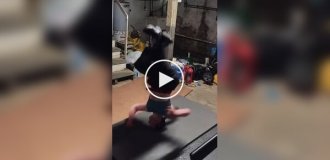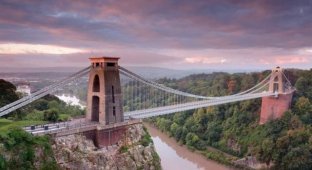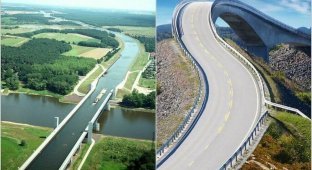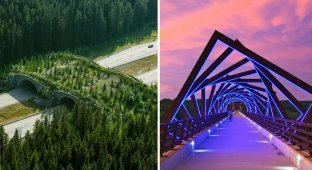A selection of photos from the past that will make you wonder (21 photos)
I present a selection of unique and amazing shots from around the world. Some will surprise, shock, and some will make you laugh. 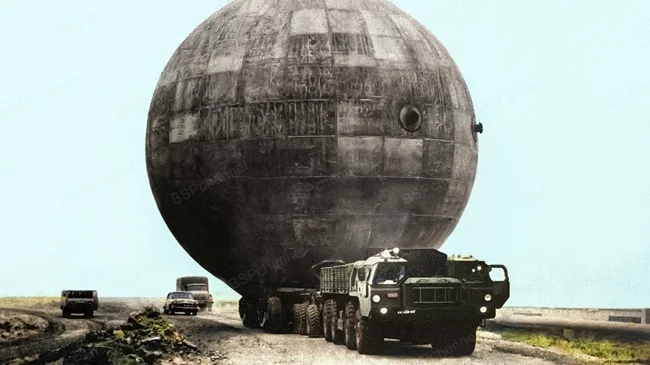
Amazed onlookers watch in amazement as Miss Beth Pitt walks her beloved fawn, Star Message, in downtown New York City on November 16, 1942. 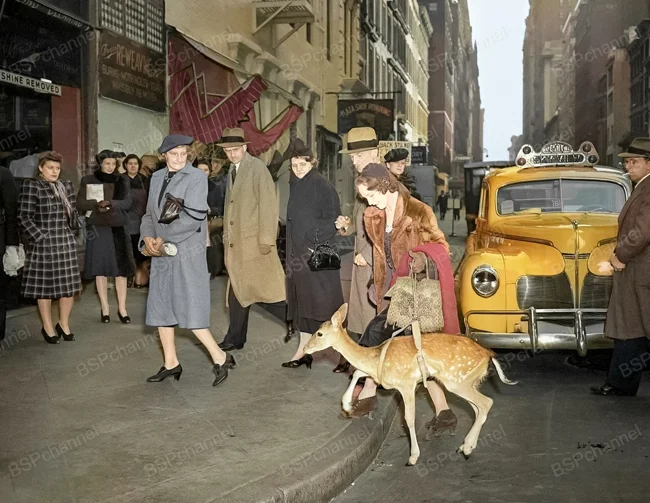
Earlier that day, Ms. Pitt paid a $2 fine in court for allowing her pet to wander unattended in Central Park.
Workers on the construction of the Forth Road Bridge in Scotland, 1961. 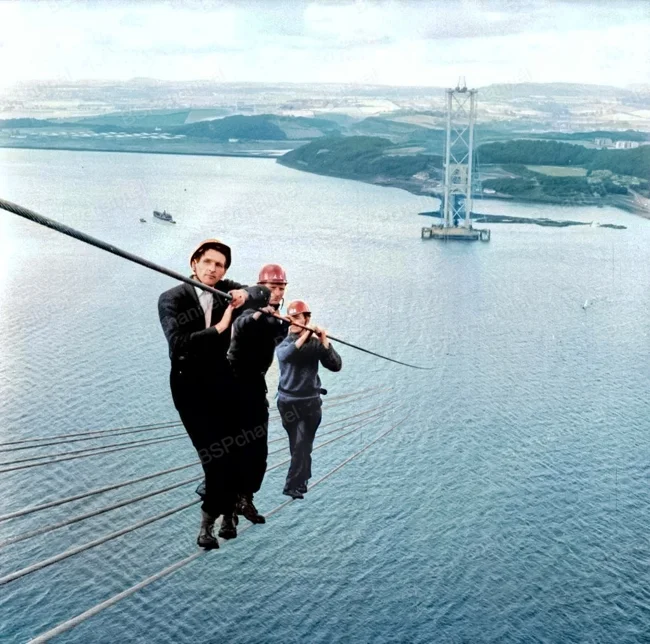
The Forth Road Bridge is an impressive feat of engineering in Scotland, located northeast of Edinburgh. Opened in 1964, this suspension bridge has become a vital transport link across the Firth of Forth, connecting the Scottish capital with the regions of Fife and the north of the country.
A Tupolev Tu-124 passenger plane landing on water. Leningrad, 1963. 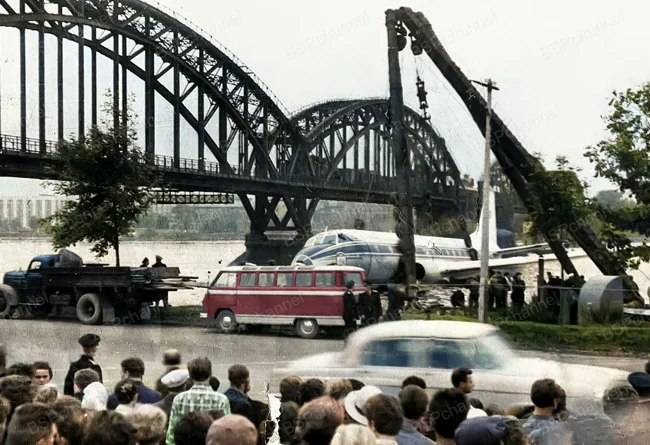
A plane en route from Tallinn to Moscow experienced an emergency situation—the landing gear failed to retract. The aircraft was diverted for an emergency landing in Leningrad. However, while dumping fuel over the city, both engines of the Tu-124 failed one after another. Faced with a desperate situation, captain Vasily Chechenev made the bold decision to land the plane on the Neva River. The landing was a success! Almost no one on board was injured, with the exception of a few passengers with minor injuries. The only high-quality photograph capturing this moment was taken by photographer Yuri Tuysk. Photos of other bystanders who attempted to document the incredible event were confiscated by the police.
Dogs Mishka and Chizhik, 1951. 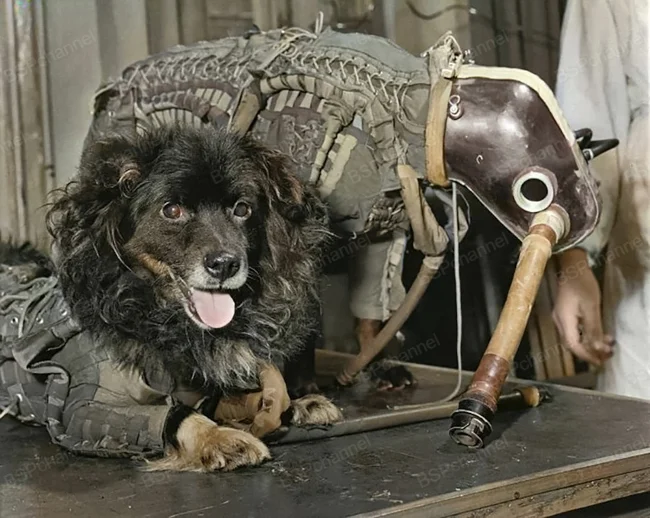
The first space explorers were mongrel dogs: Tsygan, Dezik, Lisa, Mishka, Chizhik, Smely, Ryzhik, Neputevy, and Zib. It was they who, in the summer of 1951, a decade before Yuri Gagarin's legendary flight, blazed the first trail to the stars. This unique photograph by Dmitry Baltermants captures Mishka and Chizhik, participants in the first series of space experiments (there were three such series in total). Their debut flight on the R-1B geophysical rocket took place on August 15, 1951, and was successful: the dogs were unharmed and in good health during the 18-minute flight. However, a relaunch on August 28 of that year, during which the experimental conditions were complicated to simulate human flight, ended tragically. Despite a normal takeoff and landing, Mishka and Chizhik died from oxygen deprivation.
Harley-Davidson ambulance motorcycle. Great Britain, 1920s. 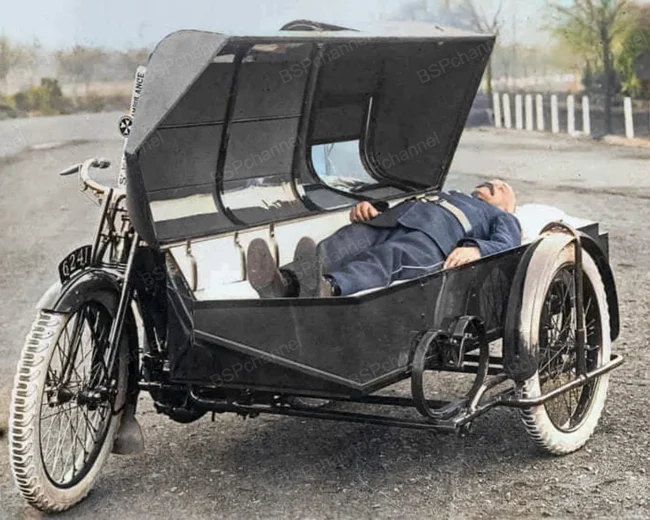
The patient was placed in a coffin-like trolley, and the lid was closed for transport.
Towing a liquid hydrogen tank at Baikonur. The tank is pulled by a MAZ-7310. 
A tank for cryogenic propellants of the Energia launch vehicle and the Buran orbiter, designed for storing and refueling liquid hydrogen and oxygen.
Characters of Grant Wood's painting "American Gothic." The artist's subjects were his dentist and his sister Nan, 1930. 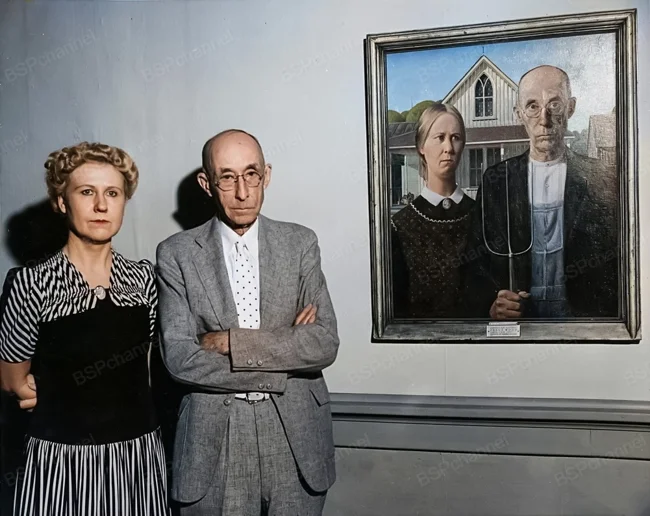
Grant Wood's "American Gothic" is more than just a famous painting. Its image has become a cultural phenomenon, becoming one of the most recognizable and endlessly parodied symbols of American art.
82-year-old tightrope walker Ivy Baldwin crosses a dam. Colorado, 1948. 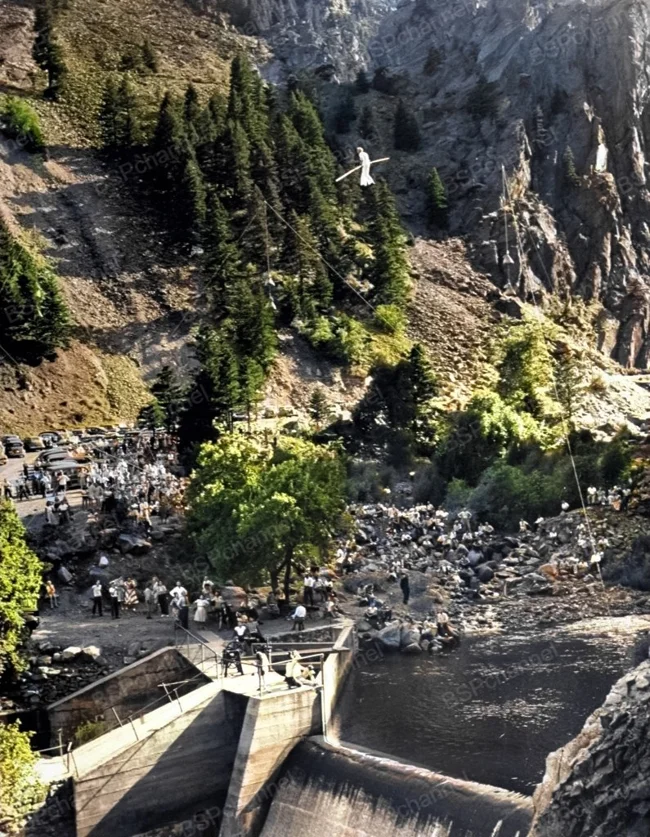
Crossing a 200-meter rope across a canyon was a familiar occurrence for Ivy Baldwin. By July 31, 1948, he had done it more than 80 times over 40 years. But that day was special, as the daredevil turned 82.
A fully functional miniature Cadillac built for the children of the royal family of Siam, 1913. 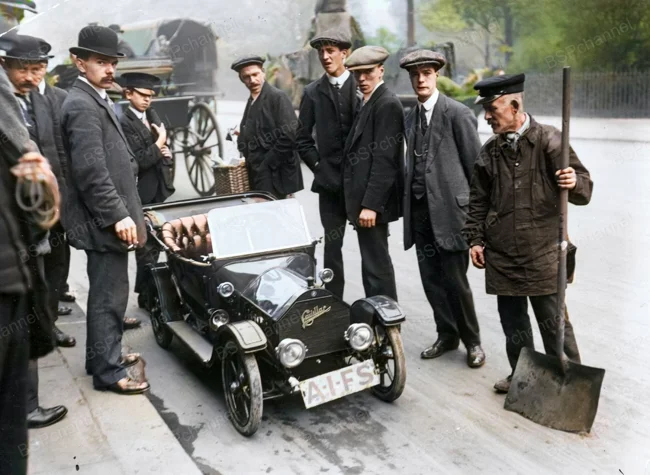
Trampoline inventor George Nissen jumps on his creation with a kangaroo. USA, 1960. 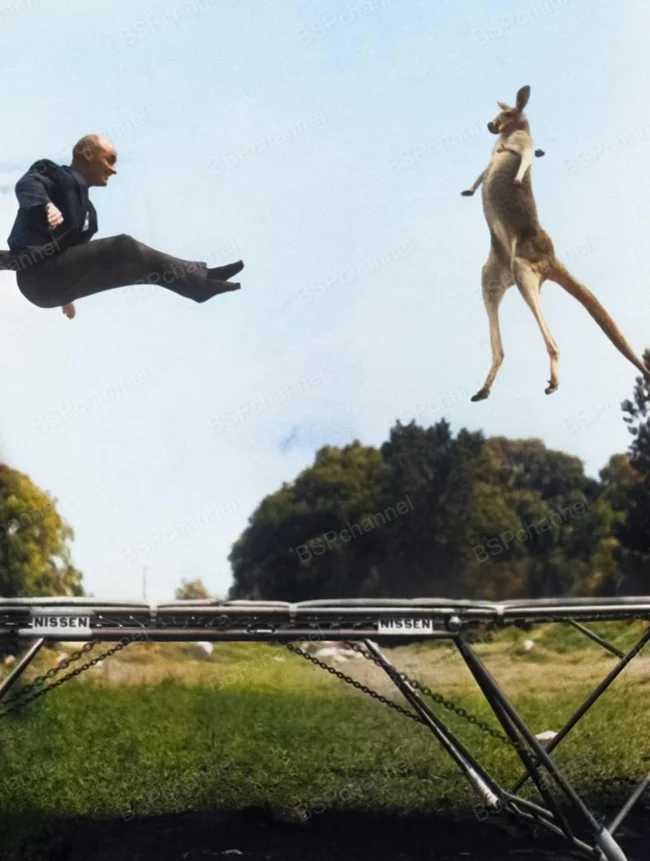
The world's first modern trampoline appeared in 1936 thanks to the efforts of George Nissen, a champion diver and acrobatic performer. Having built a prototype in his garage, he connected a piece of canvas to a metal frame with elastic bands. Although the device was initially designed for acrobatic training, it soon gained immense popularity far beyond gyms. George Nissen came up with an ingenious method of advertising: he rented Victoria the kangaroo and staged a trampoline show with her in Central Park. For a week, the inventor literally "trained" her to jump, holding her by her paws so she would bounce in time with him. This photograph is the result of these training sessions.
Underground nuclear explosion at the Semipalatinsk test site. Kazakh SSR, 1965. 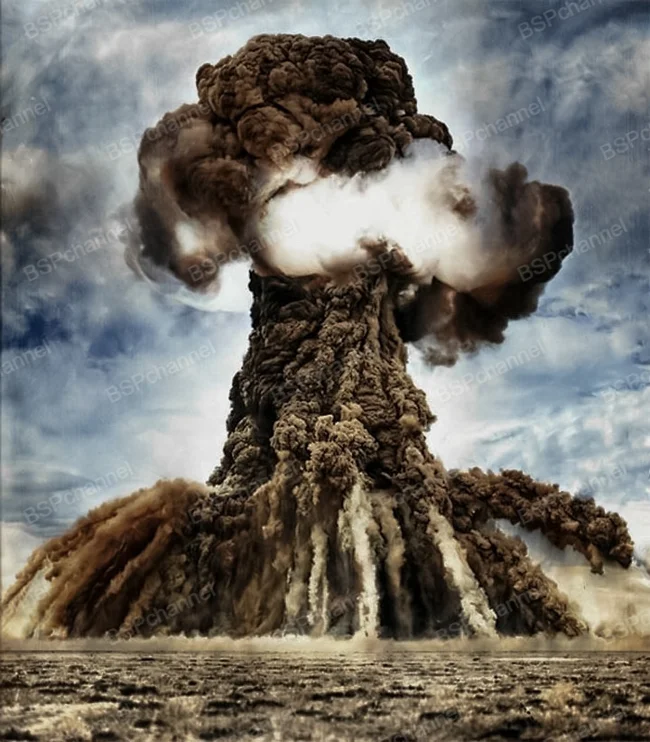
On January 15, 1965, the first industrial thermonuclear explosion in Soviet history was conducted at the Semipalatinsk test site. The power of the explosion, carried out in a narrow borehole, was such that it left behind a gigantic crater: half a kilometer in diameter and 100 meters deep, with a mound of ejected earth as tall as a 12-story building. This crater later filled with water, forming Lake Chagan.
A device supposedly increasing height by 5-15 cm, 1931. 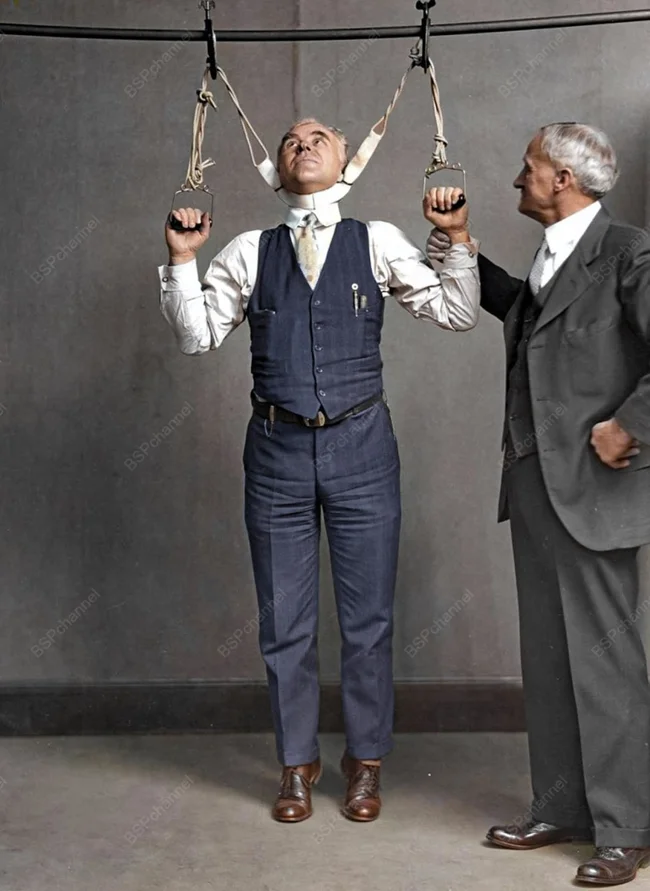
An ostrich pulls a cart at the Cawston Ostrich Farm in South Pasadena, California, circa 1915. 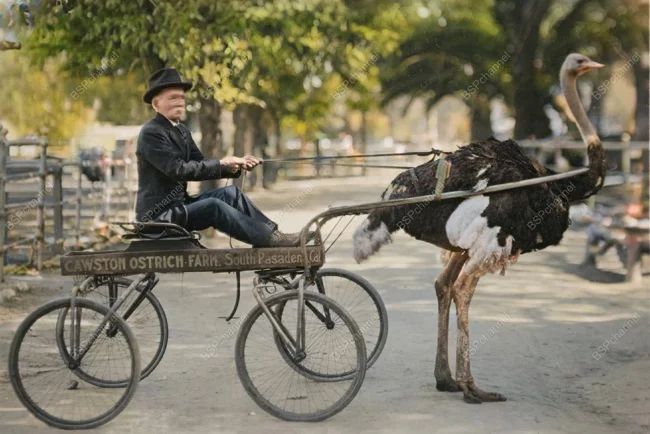
In 1885, American businessman Edwin Cawston undertook a risky expedition to South Africa, from where he brought back 50 ostriches. Only 18 birds survived the long sea voyage. Despite this loss, in 1886, near Los Angeles, in South Pasadena, Cawston opened an ostrich farm, which soon grew to a hundred. The farm quickly became a popular tourist attraction. Visitors were offered rides in ostrich-drawn carriages or a photo opportunity atop one. The farm also had a shop selling not only meat and eggs but also the season's top seller—fashionable ostrich feather accessories: boas, fans, and elegant hats.
Air-powered car. France, 1913–1914. 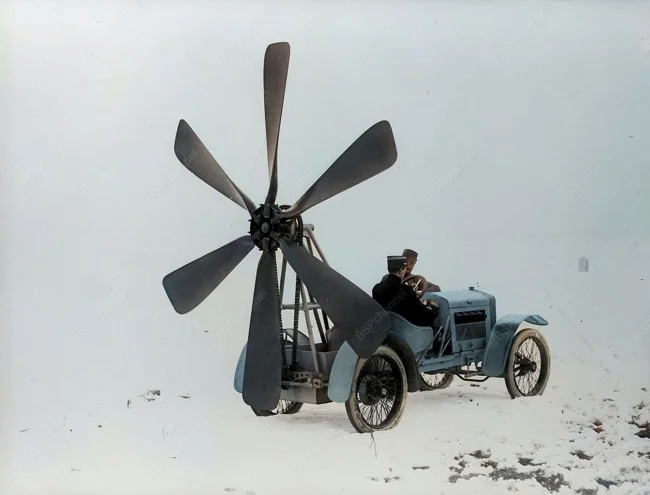
Photographer: Maurice-Louis Brange
Moving a 7,600-ton residential building to create a boulevard in Alba Iulia, Romania, 1987. 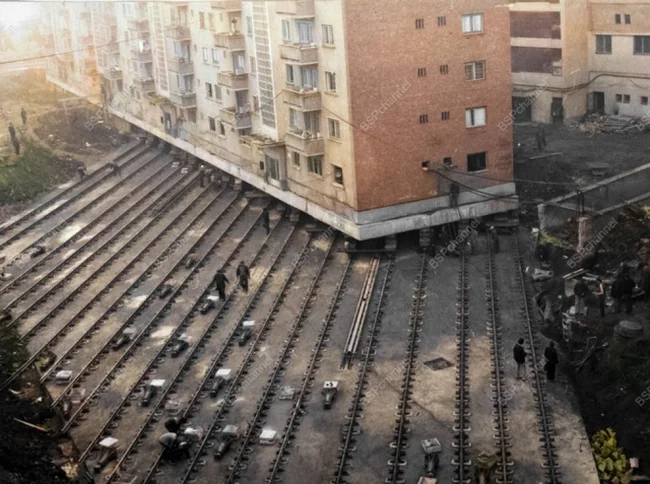
Rescue of a sailor from the French trawler Jeanne Gougy, 1962. 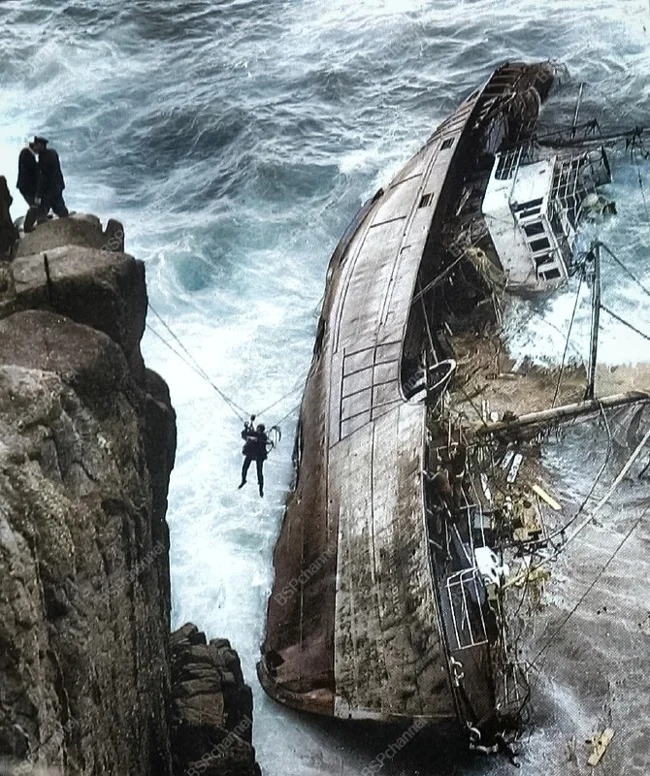
A car takes children sledding on a snowy road in Scheveningen, Netherlands. 1940s. 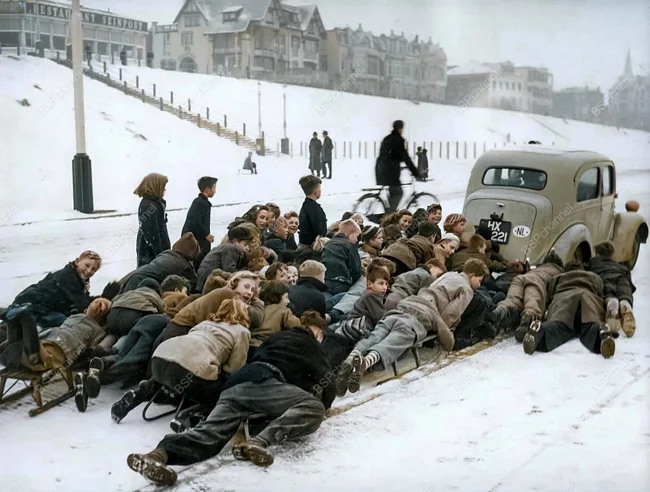
Looking for a space. Omaha, Nebraska, 1970s. 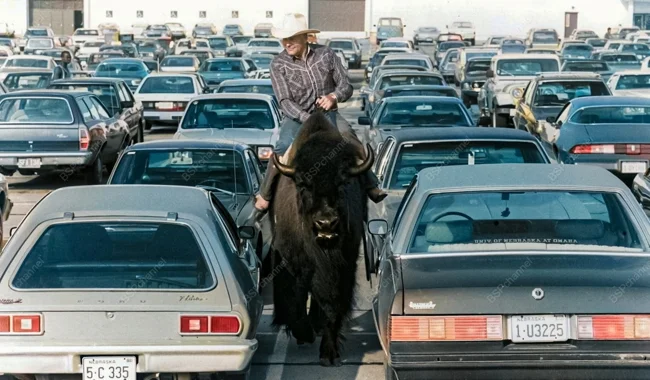
The Seattle Cedar Lumber Manufacturing Company lumber yard in Seattle, Washington, 1939. 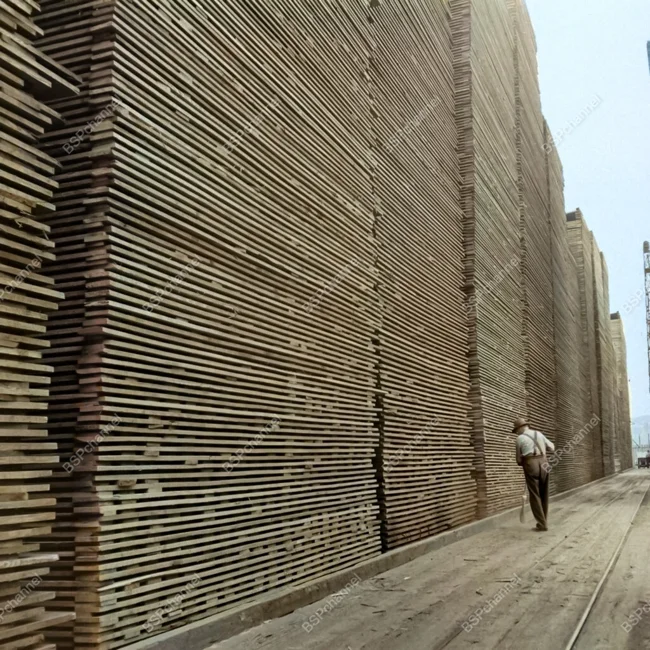
On May 20, 1958, the largest fire since the Great Fire of 1889 occurred at the Seattle Cedar Manufacturing plant. The blaze destroyed extensive lumber yards, workshops, and drying kilns, causing over $1 million in damage. Burning debris flew up to two miles away, forcing residents to spray their roofs with garden hoses. The fire caused wood dust to accumulate near steam pipes, and the fire suppression system was accidentally turned off. Seven fire departments and a boat responded to the firefighting effort, which took three days. Twelve people were injured.
A girl blow-dries her hair. Australia, 1930. 